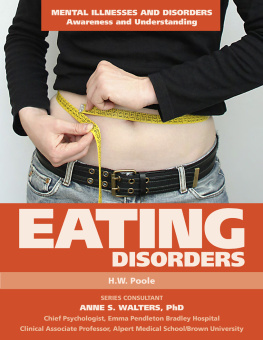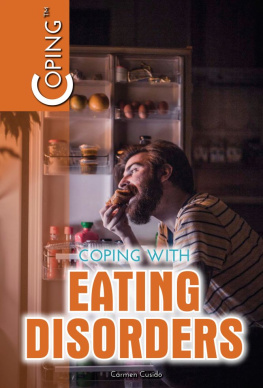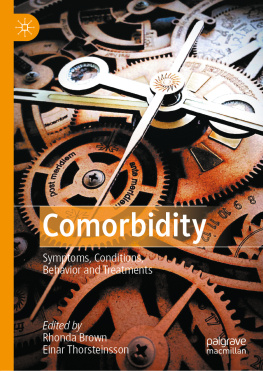
Kelly C. Allison, PhD, is an instructor at the University of Pennsylvania School of Medicine. She received her BA from the University of Notre Dame in 1995 and her MA and Ph.D. from Miami University in 1997 and 2000, respectively. Her research interests include characterizing and treating night eating syndrome. She is also interested in the effects of sociocultural influences on eating disordered attitudes and behavior.
Albert Stunkard, MD, is professor of psychiatry at the University of Pennsylvania School of Medicine, where he founded the Weight and Eating Disorders Program, of which he is currently director emeritus. He received a BS from Yale University in 1943 and an MD from Columbia University in 1945. He is the author of nearly 400 publications, mostly in the field of obesity, and his research has been supported for forty years by the National Institutes of Health.
Sara L. Thier currently works in the Quality of Care Program Area of the Robert Wood Johnson Foundation in Princeton, NJ. She received her BA from the University of Michigan, Ann Arbor in 1987, her MPH at UCLA in 1991, and is currently working on her Ph.D. in health policy.

Publishers Note
This publication is designed to provide accurate and authoritative information in regard to the subject matter covered. It is sold with the understanding that the publisher is not engaged in rendering psychological, financial, legal, or other professional services. If expert assistance or counseling is needed, the services of a competent professional should be sought.
Distributed in Canada by Raincoast Books
Copyright 2004 by Kelly C. Allison, Albert J. Stunkard, and Sara L. Thier
New Harbinger Publications, Inc.
5674 Shattuck Avenue
Oakland, CA 94609
Cover design by Amy Shoup
Edited by Kayla Sussell
Text design by Tracy Marie Carlson
epub ISBN: 9781608827321
All Rights Reserved
New Harbinger Publications Web site address: www.newharbinger.com
To my son, Tyler. You were with me and inspired me every step of the way.
Kelly C. Allison
To Elana and Keith, as you start your life together.
Albert J. Stunkard
To my parents, Paula and Sam, who always believe in me. I treasure your support and love.
Sara L. Thier
Contents
Acknowledgments
This book is the fruit of many years of research. Those many years, dating back to the 1950s, were possible first and foremost, because of the patients suffering from night eating syndrome (NES) who were willing to share their stories. The research that led to this book was also made possible through the support of our wonderful colleagues.
The NES research team at the University of Pennsylvanias Weight and Eating Disorders Program has been instrumental in furthering our understanding of NES. Dr. John OReardon has provided guidance and ingenuity in his work with NES. Our research assistants, Nicole Martino, Heidi Toth, Heidi Marshall, and Dr. Pilar Cristancho put in many hours working with patients as well as reviewing data and keeping the nuts and bolts of the program running smoothly. Thanks go to sleep research experts Dr. David Dinges and Dr. Naomi Rogers for dedicating their energies toward describing sleep among people with NES. We also thank all of the students who have worked with us over the past few years; they brought energy and creativity to our work.
We would also like to thank our colleagues for their encouragement in our research efforts and in writing this book. Drs. Berkowitz, Faith, Foster, Sarwer, Wadden, and Womble are dedicated to the study and treatment of obesity. They are role models in the field and supportive through both their expertise and friendship. Thanks as well to Dr. Angie Makris and Dr. Jackie Kloss for providing feedback on nutrition and therapeutic methods for sleep, respectively.
Thank you to the editors from New Harbinger Publications who initiated the writing of this book. Editors Jueli Gastwirth and Melissa Kirk kept us on track during the writing process, and Kayla Sussell was very helpful in copyediting the manuscript.
We would also like to thank our families, who, as always, were there with their patience and acceptance of the extra hours devoted to writing this book.
Finally, special thanks to the many people we have met over the years who were kind enough to tell us about their experiences with NES to us so that, step-by-step, we can come to understand and treat this syndrome more effectively.
Introduction
If you suffer from Night Eating Syndrome (NES), you know that it is disruptive to your life and damaging to your health, but only recently have health providers and the public begun to recognize it as a serious problem needing treatment. Characterized by lack of appetite in the morning, overeating at night, and waking to eat throughout the night, NES has started receiving more publicity and, just as important, more funding for research to find better ways of treating this complex problem.
Remember you are not alone. About 9 percent of people seen in clinics for treatment of obesity are also suffering from NES. Although you do not have to be obese to suffer from NES, approximately a third or more of individuals who are extremely overweight, ranging from 27 to 42 percent, also have NES (Hsu, Betancourt, and Sullivan 1996; Rand, Macgregor, and Stunkard 1997). Both men and women are affected by NES, with men representing over 40 percent of all people with the syndrome. By reading this book and working through the exercises, you will learn about the different components of the syndrome and how each component has targeted treatments that can help to reduce your problems with NES.
Why We Wrote This Book
Our intention throughout this book is to offer you hope and help. We are well aware that some of the physicians you may visit might not even acknowledge your problem, so we feel that our book will fill an important gap in providing information and guiding you to take charge of your health, your weight, and your life.
Who We Are
Dr. Albert Stunkard. Of the three of us, Dr. Stunkard has the longest history of working with NES. In fact, in 1955 Dr. Stunkard and two of his colleagues were the first to identify and publish an article about NES (Stunkard, Grace, and Wolff 1955; Stunkard 1959). Though more than fifty years have passed since he first learned about night eating syndrome, his introduction to it was so dramatic that it has stayed with him to this day.
Dr. Stunkard recalls, I was then a resident-in-training for psychiatry and I was treating Maxine, a sixteen-year-old high-school student who had been referred to the Psychiatry Clinic for obesity and for depression. At the time, obesity was widely viewed as an eating disorder, and psychotherapy was considered an appropriate treatment for it as well as for depression. Over a period of three months Maxine made considerable progress; she lost ten pounds and came out of her depression, smiling and full of life. At this point she reported a series of troubling interactions with her father, who had begun to sexualize their relationship. Then one evening she arrived at my office to tell me, mournfully, that her parents had told her that she could not continue therapy.
Thoroughly disappointed with this outcome, I turned to a small group of fellow trainees who regularly met to discuss patients and problems and offer support to each other. While discussing Maxine, I turned on an audiotape to convey a feeling for her mood. All of a sudden, one of the trainees, an obese young woman, gasped for air, rose from the floor on which we had been sitting, and staggered out of the room. I followed her to find her in the middle of a panic attack. After she had recovered, she returned to the group and explained what had happened.












